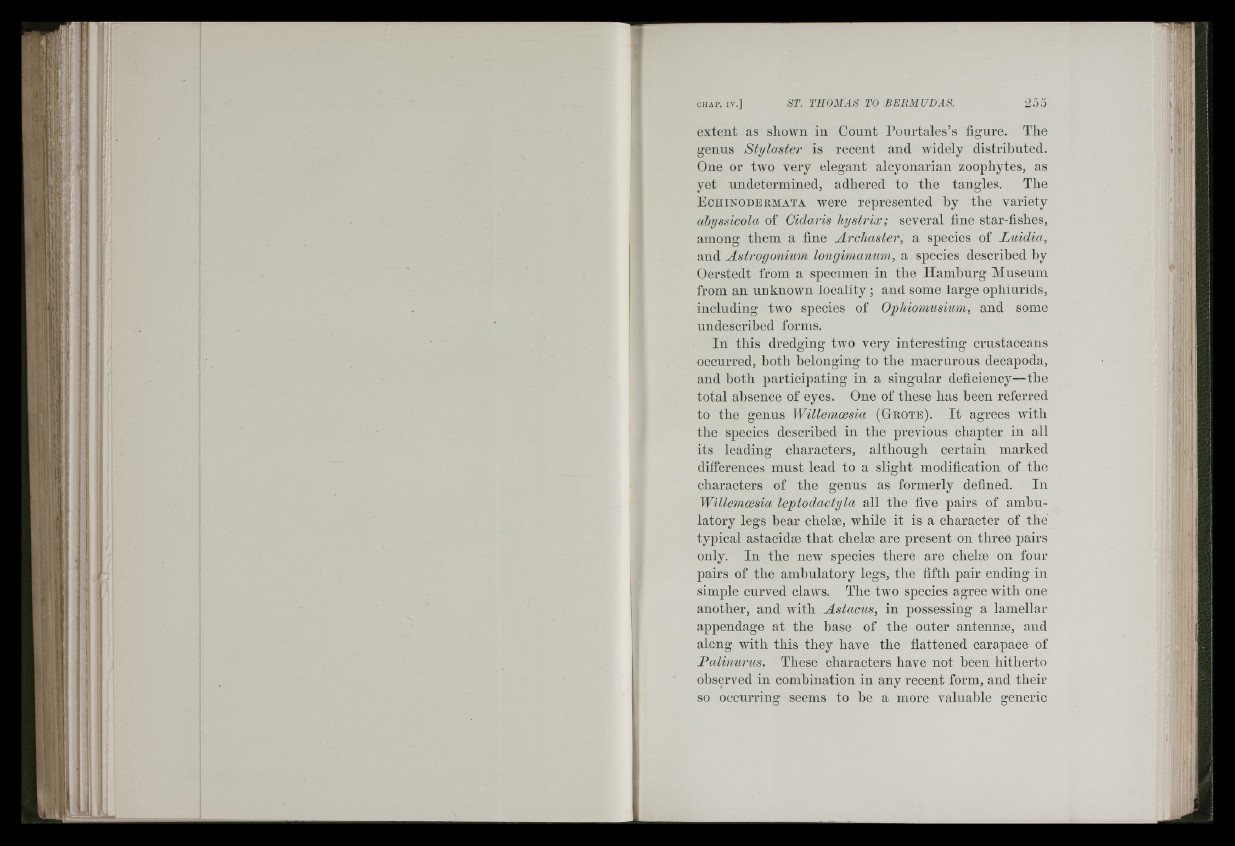
extent as sliown in Count Pourtales’s figure. The
genus Stylaster is recent and widely distrihuted.
One or two very elegant alcyonarian zoophytes, as
yet undetermined, adhered to the tangles. The
Ech INODE RM ATA woro represented by the variety
abyssicola of Cidaris hystrix; several fine star-fishes,
among them a fine Arcliaster, a species of Luidia,
and Astrogonium longimanum, a species described hy.
Oerstedt from a specimen in the Hamburg Museum
from an unknown locality ; and some large ophinrids,
including two species of Ophiomusiuni, and some
nndescribed forms.
In this dredging two very interesting crustaceans
occurred, both belonging to the macrurous decapoda,
and both participating in a singular deficiency—the
total absence of eyes. One of these has been referred
to the genus Willemoesia (Grote). It agrees -with
the species described in the previous chapter in all
its leading characters, although certain marked
differences must lead to a slight modification of the
characters of the genus as formerly defined. In
Willemoesia leptodactyla all the five pairs of ambulatory
legs hear chelæ, while it is a character of the
typical astacidæ that chelæ are present on three pairs
only. In the new species there are chelæ on four
pairs of the ambulatory legs, the fifth pair ending in
simple curved claws. The two species agree with one
another, and with Astacus, in possessing a lamellar
appendage at the base of the outer antennæ, and
along with this they have the flattened carapace of
Palinurus. These characters have not been hitherto
observed in combination in any recent form, and their
so occurring seems to he a more valuable generic
ifi
ifli
....t r